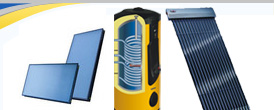|
|


|
|
1. Apvalios LED lempos - LED bulb lights, spot lamps

Daugiau...
2. LED panelės, plokštės - LED panels. LED lubinės lempos – LED ceiling lamps

Daugiau...
3. Apvalios LED lempos - LED tube lamps

Daugiau...
4. LED kiemų, sodų, parkų, gatvių lempos

Daugiau...
5. LED flood didelio šviesos srauto lempos ( kiemų, teritorijų apšvietimui, apsaugai )

Daugiau...
6. Aukšto galingumo LED šviestuvai - High bay LED šviestuvai ( pramonės cechams, sporto salėms )

Daugiau...
7. LED juostos - LED strips

|
|
Dėl apšvietimo projektų ir montavimo kreiptis adresu:
Laisvės pr. 105, Vilnius. Tel.: 8 603 18700
|
|
What is LED?
The letters LED stand for Light Emitting Diode. In basic terms it is a semiconductor that emits light. They are extremely energy efficient, almost all the electricity used creates light, rather than heat. No filaments or fragile glass tubes are present creating a long lasting, durable product. This also enables simple recycling with minimal environmental impact.
What are some of the advantages of LEDs?
There are many advantages in using LEDs as a light source:
• Long life - lifespan of +50,000hrs
• Extremely energy efficient
• 100% recyclable
• Environmentally friendly
• Low heat and reduced fire risk
• Virtually maintenance free
• Low wattage
• Durable and shock resistant
• Reduced loading on air conditioning
• Lights instantly
Can I dim LEDs?
LEDs can be dimmed.
It is simpler to design a new lighting system to incorporate LED dimming. The correct control gear can be installed to ensure that LEDs can be dimmed. However dimming LEDs will shorten their life span. A range of LED dimmers are currently available on the market.
Retrofitting LEDs is more challenging. Existing lighting systems were specifically designed to dim incandescent or halogen lights. Each light has different requirements to make it dim correctly. LED electronic gear is generally incompatible with dimmers designed for incandescent lighting. Because of the vast number of available dimmers, it is not possible to guarantee that a given LED fixture will work with all dimmers.
Alternatively designing your wiring and switching to control clusters of lights is an effective way to achieve similar lighting levels to that of dimming.
Why are LEDs so expensive?
Although it may seem like LEDs are an expensive upfront investment, it is important to take a long-term approach. Maintenance, replacement bulbs, energy consumption and other factors are significantly reduced or eliminated. LEDs are cheaper to run in the long run. Furthermore depending on the application pay back periods can occur within 2-5 years. White LED technology is relatively new, as the technology becomes more widespread prices are expected to decrease.
Can LEDs replace traditional lighting such as incandescent, fluorescent and halogen?
Yes, large advancements in white LED technology now make LEDs suitable for a wide range of general and specific lighting applications. Lamps carries a wide range of LED fittings that will replace many traditional lighting sources.
Can I use LEDs in my existing fittings?
Yes, the LED retrofit series can simply be installed into your existing fittings.
Do I need a transformer for each light?
No, LEDs are low voltage, ensuring that a transformer can run a series of lights from one transformer. This significantly saves time, material costs, and offer many benefits for a New Install option.
What should I look for when buying an LED?
There are many LED light options available on the market. It can be a minefield when choosing lights. Below are some guidelines when purchasing an LED.
• Ask for the lumens/watt. This is a measure of Light output or how efficient the LED is transforming electricity into light. The higher the lumen output the brighter the light. An average LED will emit 30-40 LMs/watt, a better LED will emit 75-80 LM/Watt and an excellent LED will produce 100 LM/Watt. This will give you a n indication of the quality of LED. Good quality are 80-100 LM/watt LED lamps with Cree LED or SemiLEDs or Edison chips.
• Construction - Look for fittings that appear to well made.
Where are LEDs best suited ?
LEDs are more suited for some applications then others.
• Spot lighting features - LEDs typically have a narrow beam angle which make them suitable for spot lighting purposes.
• Hard to reach places - LEDs last such a long time that you will most likely never have to replace the bulb. This makes them ideal for areas that are hard to get to.
• Heat - Where many halogens or floodlights are close together heat can be a significant problem. LEDs produce very little heat. You can roughly reduce your A/C costs by about 20% by switching to LED lighting.
• Areas susceptible to shock - Since LEDs contain no fragile filaments or gas filled tubes, they are extremely durable. This makes them suitable for areas susceptible to shock or breakages.
• High usage - Lights that are used for longer periods of the day will provide greater savings and their payback periods occur quicker.
|
|
| |
Pavadinimas: UAB Energitechas
Adresas: Bajorų km., Vilniaus raj.
Įmonės kodas: 300564057
|
Tel.: 8 685 07957
Tel.: 8 603 18700
e-mail: info@energitechas.lt |
www.kompresoriai.eu
www.dock.lt
jau greitai: LED lempos |
|
|
|